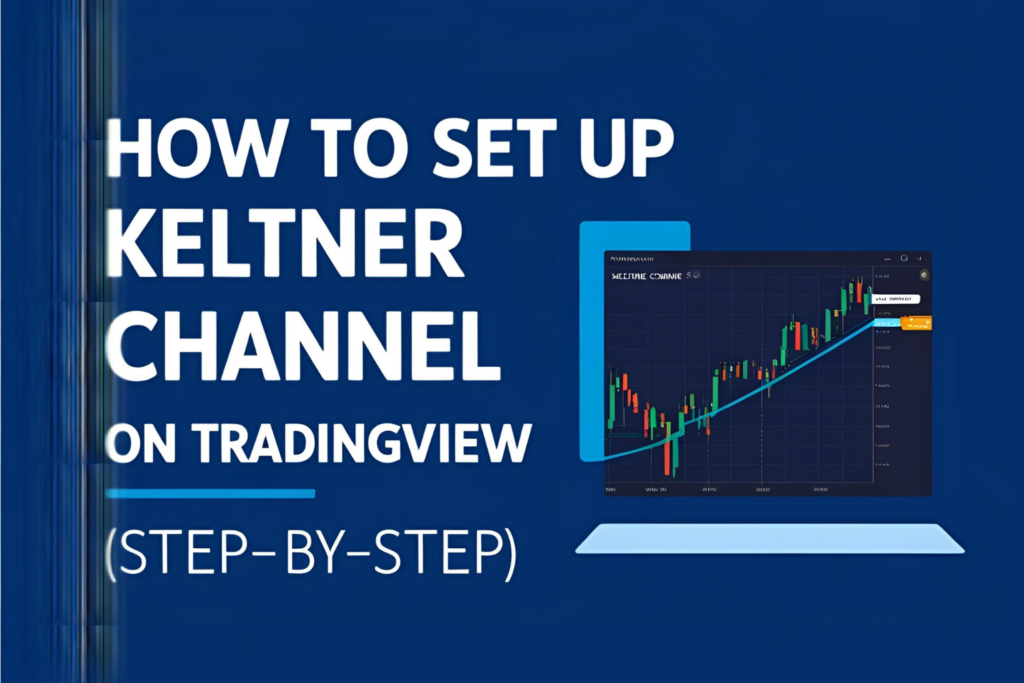The Keltner Channel includes a customizable multiplier, which directly controls the distance of the upper and lower bands from the center EMA line. Understanding and adjusting the Keltner Channel multiplier is key to making the indicator fit your strategy.
In this post, we explain what the multiplier does, how it affects signals, and how to choose the best setting for your trading style.
What Is the Keltner Channel Multiplier?
The multiplier is a number applied to the Average True Range (ATR) to calculate the width of the Keltner Channel bands.
Formula:
- Upper Band = EMA + (Multiplier × ATR)
- Lower Band = EMA − (Multiplier × ATR)
The higher the multiplier, the wider the channel. The lower the multiplier, the narrower the channel.
Common Multiplier Settings
| Multiplier | Channel Width | Best For |
|---|---|---|
| 1.0 | Narrow | Scalping, fast signals |
| 1.5 | Moderate | Intraday trend following |
| 2.0 | Standard | Swing trading, breakouts |
| 2.5–3.0 | Wide | Filtering noise in volatile markets |
How Multiplier Affects Trade Signals
- Smaller Multiplier:
- Tighter bands
- More signals
- Higher chance of false breakouts in choppy markets
- Larger Multiplier:
- Wider bands
- Fewer signals
- Better for confirming strong momentum or avoiding noise
Choose a value that aligns with your strategy’s risk tolerance and timeframe.
When to Adjust the Multiplier
You may want to increase or decrease the multiplier based on:
- Market Volatility
- Use a higher multiplier during earnings seasons or news-heavy weeks
- Lower multiplier for stable, low-volatility markets
- Timeframe
- Shorter timeframes (1-min, 5-min): tighter settings like 1.0–1.5
- Longer timeframes (1H, 1D): broader bands like 2.0–2.5
- Trading Style
- Scalpers and day traders often prefer quick signals from narrower bands
- Swing and trend traders use wider bands for clarity and cleaner trends
Example
Let’s say:
- 20-period EMA = 100
- ATR = 2
- Multiplier = 2
Then:
- Upper Band = 100 + (2 × 2) = 104
- Lower Band = 100 − (2 × 2) = 96
If you increase the multiplier to 2.5:
- Upper Band = 100 + (2.5 × 2) = 105
- Lower Band = 100 − (2.5 × 2) = 95
This small change can dramatically affect your entry and exit triggers.
Final Thoughts
The Keltner Channel multiplier is a powerful tuning parameter that can make the indicator more aggressive or more conservative. Adjust it based on your market, timeframe, and strategy to strike the right balance between signal sensitivity and signal reliability.
Always test multiplier changes using backtesting or paper trading before applying them in live markets.
FAQs
1. What is the default Keltner Channel multiplier?
Most platforms use 1.5 or 2.0 as default.
2. Should I use the same multiplier for all markets?
No. Adjust it based on asset volatility. Crypto might need wider bands than blue-chip stocks.
3. Does a lower multiplier mean better accuracy?
Not always. Lower multipliers give more signals, but also more noise.
4. Is there a “best” multiplier?
There’s no universal best. Start with 1.5 or 2.0 and refine from there based on results.
5. Can I automate changes to the multiplier?
Yes, if your platform supports scripting or conditional logic.



